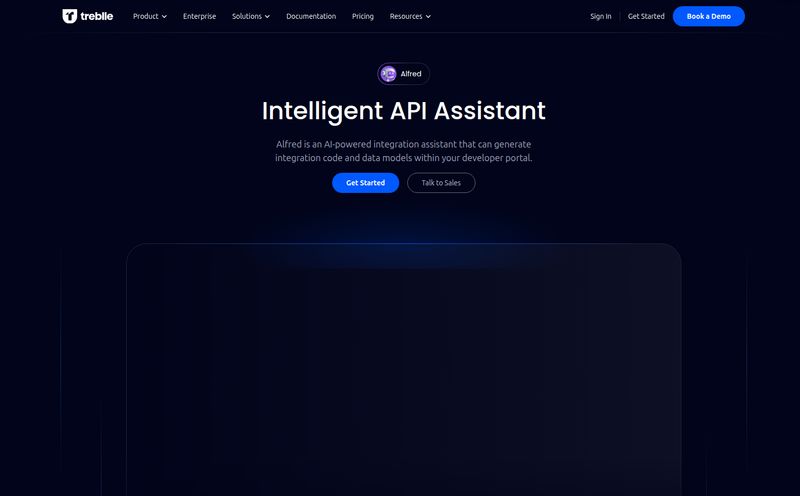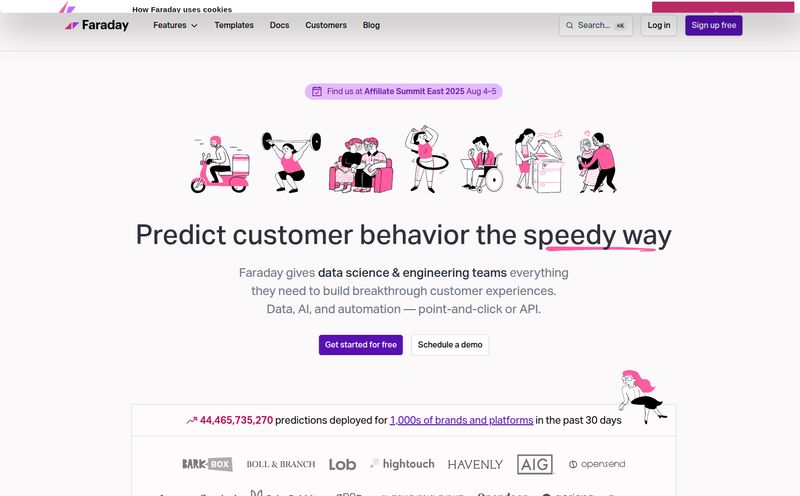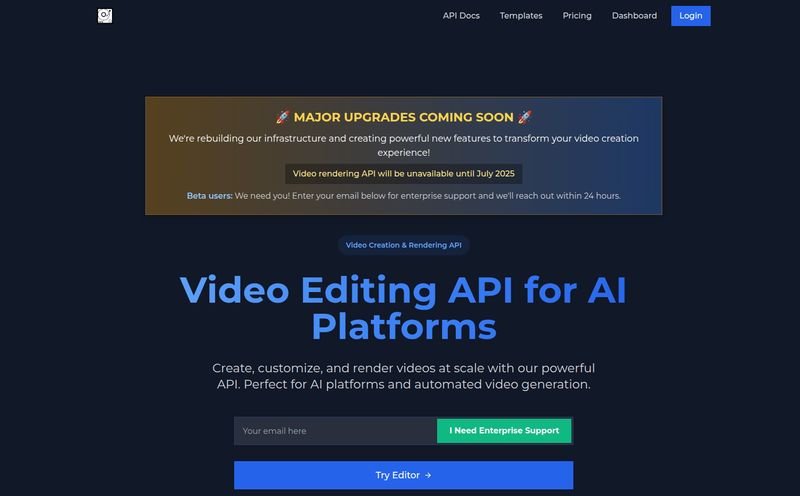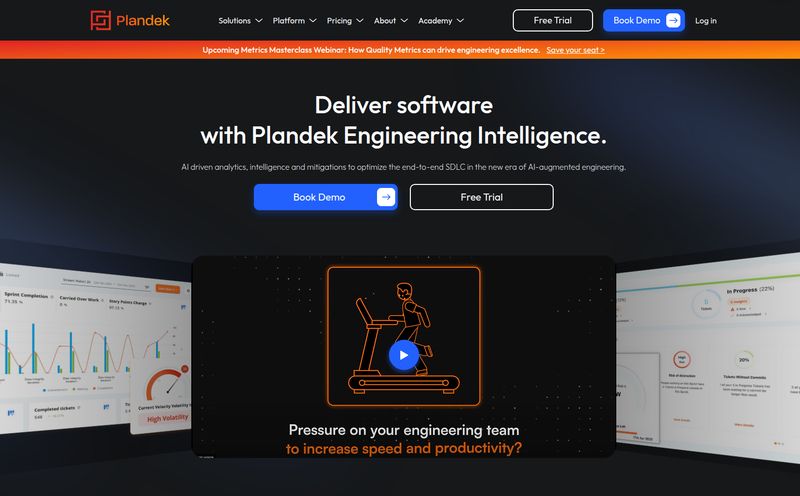I’ve been in the SEO and tech game for years, and if there’s one thing I’ve seen time and time again, it’s the cycle of centralization. A new technology emerges, full of promise and open to all. Then, slowly but surely, a few giants build walls around it, making it their private playground. We've seen it with search, with social media, and let's be honest, we're seeing it right now with AI.
The world of artificial intelligence feels a lot like a kingdom ruled by a few powerful lords—Google, OpenAI, Microsoft. They have the massive computing power, the proprietary models, and the deep pockets. For the average developer or small startup, trying to build something truly innovative can feel like trying to build a castle with a bucket and spade while they're using cranes. It’s expensive, it’s restrictive, and you’re always playing by their rules.
So, when a project like Ratio1 comes across my desk, I’m immediately skeptical. And immediately intrigued. They’re calling themselves “The Ultimate AI OS,” powered by blockchain. Big words. Bold claims. But the more I looked, the more I thought… what if they can actually pull this off?
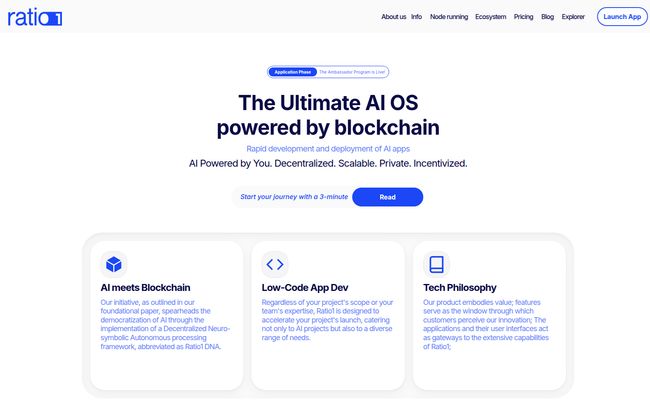
Visit Ratio1
So What Exactly Is Ratio1?
Let's strip away the marketing jargon for a second. At its heart, Ratio1 is trying to be a decentralized operating system for building and running AI applications. Think of it less like a single app and more like a foundational layer, a bit like trying to build a decentralized version of Amazon Web Services (AWS) or Google Cloud, but specifically designed for the heavy lifting that AI requires.
They’re building it on the blockchain, which brings in the whole decentralized, community-owned ethos. The goal is to create a network where anyone can contribute computing power and anyone can build and deploy an AI app without asking for permission from a central authority. They have this core tech they call the Ratio1 DNA (Decentralized Neuro-symbolic Autonomous processing framework), which is their special sauce for making complex AI models work effectively across a distributed network of computers. It's a mouthful, I know, but the core idea is what matters: making AI run everywhere, for everyone.
The Core Ingredients: A Peek Under the Hood
Ratio1 isn't just one thing; its' a combination of a few key ideas that, together, could create something pretty special. It's like a recipe where the individual ingredients are interesting, but the final dish is what you’re really there for.
A Low-Code Playground for AI Builders
This is the part that gets me genuinely excited. One of the biggest hurdles in tech is the steep learning curve. Ratio1 is promising a low-code environment. This means you won’t necessarily need a PhD in machine learning or a team of 20 engineers to bring an AI idea to life. By simplifying the development process, they could open the floodgates for creativity. Imagine small businesses creating custom AI chatbots, artists experimenting with generative models, or researchers deploying complex simulations without having to fight with server configurations for weeks. This lowering of the barrier to entry is, for me, a massive deal.
The R1 Token and a Tokenized Economy
Of course, it wouldn't be a web3 project without a token, right? In this case, it’s the R1 utility token. Before you roll your eyes, this one actually has a clear purpose. The R1 token is the lifeblood of the Ratio1 ecosystem. It's the currency used to pay for computational resources, run applications, and transact on the network. This creates a circular economy: people who provide the computing power (node operators) earn R1, and people who use that power (developers) spend R1. It’s a system designed to be self-sustaining, incentivizing participation from both sides of the marketplace.
Node Deeds: More Than Just Staking?
Okay, this is where things get a bit more unique. Ratio1 has a concept called Node Deeds. My first thought was, “Oh, another fancy name for staking.” But it’s a little deeper than that. They are positioning Node Deeds as an anti-inflationary mechanism and a way to secure a long-term stake in the network's infrastructure. It’s almost like buying a license or a franchise spot for a specific node. By holding a Deed, you get a claim on the rewards generated by that part of the network. It’s a way to encourage long-term commitment rather than short-term speculation. It’s like buying a plot of digital land that you expect to become prime real estate as the city around it grows. It's a complex idea, and could be a hurdle for newcomers, but I appreciate the thought put into network stability.
Let's Talk Brass Tacks: The Cost of Running on Ratio1
Now for the question every business owner and developer asks: what’s this going to cost me? The pricing page for Ratio1 is… different. You won’t find your standard tiered SaaS plans here. Instead, you'll see a table of workloads. It’s a model based on what you actually use.
| Type | Example Spec | Estimated Monthly Budget (per Worker) |
|---|---|---|
| Generic App (Low) | 2 core, 8 GB | $30 |
| Service (MySQL) | 1 core, 2 GB, 50 GB | $30 |
| GPU (Extra) | RTX 3090 - 30xx | $36 |
| GPU (Ultra) | A100, H100 | $900 |
Note: These are estimates from their site and are subject to change based on market dynamics.
This is effectively a decentralized cloud hosting model. You pay for the specific resources—CPU cores, RAM, GPU access—that your application needs. A simple app might cost you $30 a month to run, while a heavy-duty AI model needing a top-tier GPU like an A100 could run you closer to $900. The pricing being tied to market rates is a double-edged sword. It could be significantly cheaper than centralized providers, but it also means less price predictability. It's a tradeoff for decentralization that projects will have to weigh.
The Good, The Bad, and The "Wait and See"
Alright, let's get real for a minute. No project is perfect, especially one this ambitious. On one hand, the promise of democratizing AI and breaking free from Big Tech's walled gardens is incredibly compelling. The low-code approach could genuinely spark a new wave of innovation from unexpected places. I love the idea of an AI platform that is open, censorship-resistant, and community-governed.
However, we have to address the elephant in the room: Ratio1 is not currently available. The roadmap points to a launch in Q1 2025. Right now, it's all a beautifully crafted plan on paper. The entire success of the platform hinges on the classic web3 chicken-and-egg problem: it needs a massive network of node operators to provide the computing power, and it needs a thriving community of developers to build apps that use that power. Without one, the other won't come.
Furthermore, the reliance on the R1 token and the complexity of Node Deeds might be a barrier to entry for traditional developers who just want to build, not manage a crypto portfolio. Bridging that gap between the Web2 and Web3 worlds will be one of their biggest challenges.
My Final Take: Cautious Optimism
So, where do I land on Ratio1? I’m cautiously optimistic. I’ve seen countless projects promise to change the world and then quietly fade away. But Ratio1 has a few things going for it: a public and substantial team (which is always a good sign), a clear and detailed roadmap, and a vision that directly addresses a real pain point in the tech industry.
If they can navigate the launch, attract the initial community of builders and providers, and prove their tech works as advertised, Ratio1 could become a significant player in the Decentralized Physical Infrastructure (DePIN) space. It's a moonshot, for sure. But the AI space desperately needs more moonshots like this. I’ll be watching that Q1 2025 date very, very closely.
Frequently Asked Questions about Ratio1
- What is Ratio1 in simple terms?
- Ratio1 is a decentralized platform, like a community-owned cloud, designed specifically for building and running AI applications. It aims to make AI development more accessible and less controlled by big tech companies.
- How does the R1 token work?
- The R1 token is the platform's utility currency. Developers use it to pay for the computing power their apps consume, and the people providing that power (node operators) earn R1 tokens as a reward.
- What are Node Deeds for?
- Node Deeds are a special type of stake in the network. They represent a long-term commitment to providing resources and in return, give the holder rights to a share of the network’s earnings. They're designed to create stability and reward foundational members of the community.
- Is Ratio1 free to use?
- No, it's not free. While there's no subscription fee to join the platform, you pay for the computational resources you use, similar to how you pay for usage on AWS or Google Cloud. The costs will depend on how demanding your application is.
- When is Ratio1 launching?
- According to their public roadmap, Ratio1 is planning its mainnet launch in the first quarter of 2025.
- Who is behind Ratio1?
- Ratio1 has a publicly listed team of founders, developers, and advisors shown on their website, led by individuals like Archibald Helsen and Iulian Bor-Poiana. Having a public team adds a layer of accountability and credibility to the project.
Conclusion
In a world where AI is becoming more powerful and more centralized every day, Ratio1 is a bold counter-move. It's an attempt to build a new foundation for artificial intelligence—one that is open, distributed, and owned by its users. It’s a high-risk, high-reward venture, not just for the team building it, but for the entire web3 and AI community. The path ahead is long and full of challenges, but the destination is worth aiming for. The tech world needs more wild swings like this. Let's see if they can hit a home run.
